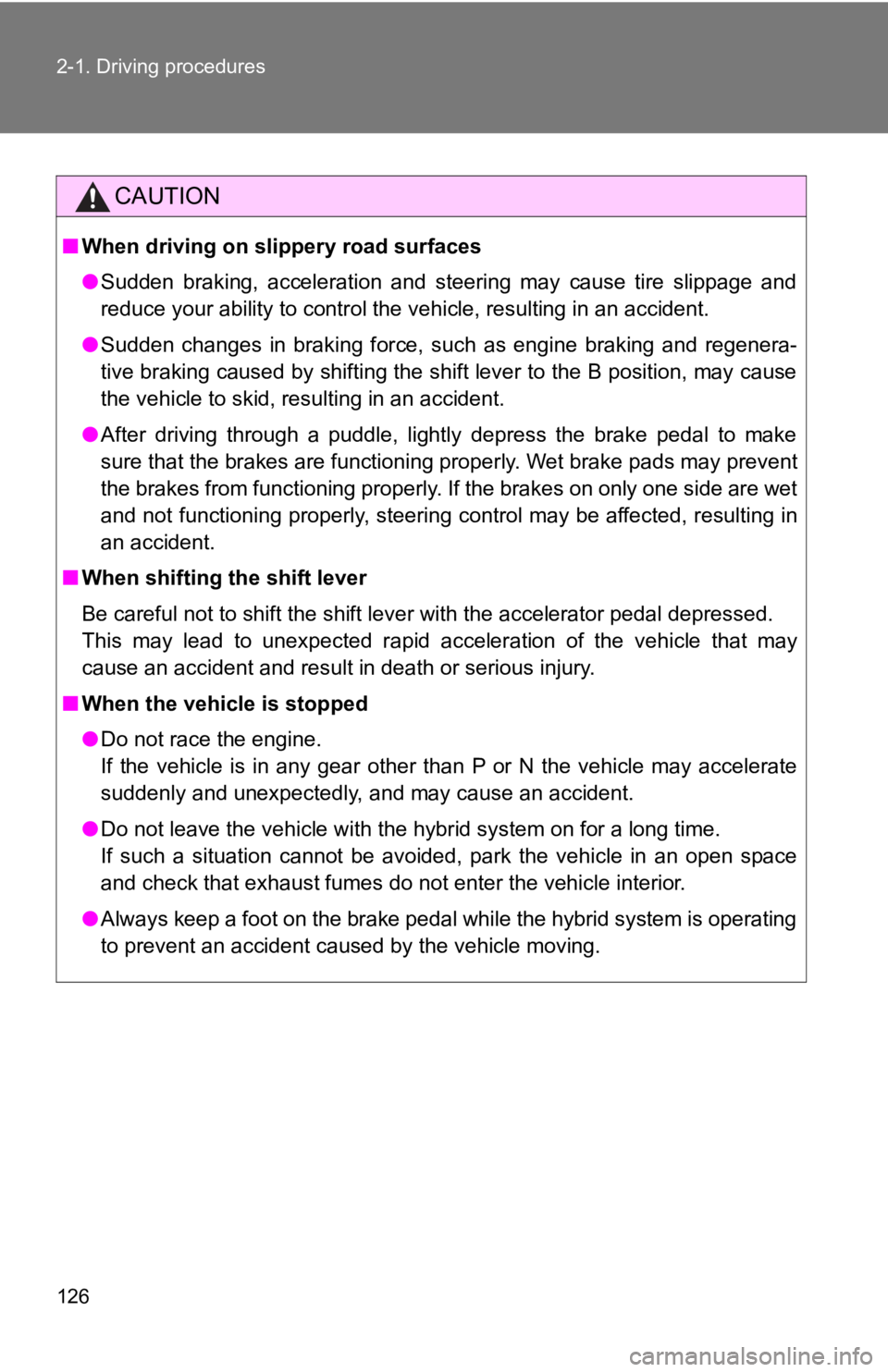Page 4 of 444

TABLE OF CONTENTSIndex
4
Trunk features .................... 263
Garage door opener ........... 264
Compass ............................ 269
4-1. Maintenance and care...... 274 Cleaning and protecting the vehicle exterior ........... 274
Cleaning and protecting the vehicle interior ............ 276
4-2. Maintenance ..................... 279 Maintenance requirements .................... 279
General maintenance ......... 281
Emission inspection and maintenance (I/M)
programs .......................... 284
4-3. Do-it-yourself maintenance ................... 285
Do-it-yourself service precautions ...................... 285
Hood................................... 288
Positioning a floor jack ....... 289
Engine compartment .......... 291
12-volt battery .................... 300
Tires ................................... 304
Tire inflation pressure......... 313
Wheels ............................... 317
Air conditioning filter ........... 319
Key battery ......................... 322
Checking and replacing fuses ................................ 325
Light bulbs .......................... 336 5-1. Essential information ....... 342
If your vehicle needs to be towed ........................... 342
If you think something is wrong ................................ 345
Event data recorder ............ 346
5-2. Steps to take in an emergency ...................... 348
If a warning light turns on or a warning buzzer
sounds... .......................... 348
If a warning message is displayed .......................... 357
If you have a flat tire ........... 368
If the hybrid system will not start ............................ 378
If the shift lever cannot be shifted from P ................... 380
If you lose your keys ........... 381
If the electronic key does not operate properly ......... 382
If the vehicle’s 12-volt battery is discharged ........ 385
If your vehicle overheats..... 389
If the vehicle becomes stuck ................................. 393
4Maintenance and care
5When trouble arises
Page 122 of 444

122 2-1. Driving procedures
■For efficient use
●Put the shift lever into D when driving
In the N position, the gasoline engine operates but electricity cannot be
generated. The hybrid battery (traction battery) will be discharged requir-
ing unnecessary engine power to recharge.
● Drive your vehicle smoothly
Avoid abrupt acceleration and deceleration. Gradual acceleration and
deceleration will make more effective use of the electric motor (traction
motor) without having to use gasoline engine power.
● Avoid repeated acceleration
Repeated acceleration consumes hybrid battery (traction battery) power,
resulting in poor acceleration. Battery power can be restored by driving
with the accelerator pedal slightly released.
● Put the shift lever into P when parking
In the N position, the hybrid battery (traction battery) does not recharge.
Leaving the shift lever in N for an extended period of the time may dis-
charge the hybrid battery. The vehicle cannot run if the hybrid battery is
discharged.
■ Normal characteristics after turning off the hybrid system
Approximately five hours after the hybrid system is turned off, you may hear
sound coming from under the vehicle for several minutes. This is because a
fuel evaporation leakage check is performed. It does not indicate a malfunc-
tion.
Page 125 of 444

125
2-1. Driving procedures
2
When driving
CAUTION
●
If the smell of exhaust is noticed inside the vehicle, open the windows and
check that the trunk is closed. Large amounts of exhaust in the vehicle can
cause driver drowsiness and an accident, resulting in death or a serious
health hazard. Have the vehicle inspected by your Toyota dealer immedi-
ately.
● Do not under any circumstances shift the shift lever to P or R while the
vehicle is moving.
Doing so can cause significant damage to the transmission system and
may result in a loss of vehicle control.
● Do not shift the shift lever to N while the vehicle is moving.
Doing so may cause insufficient engine braking and lead to an accident.
● Do not turn the hybrid system off while driving.
The power steering and brake systems will not operate properly if the
hybrid system is off.
● Use engine braking to maintain a safe speed when driving down a steep
hill.
Using the brakes continuously may cause the brakes to overheat and lose
effectiveness. ( →P. 136)
● When stopped on an inclined surface, use the brake pedal and parking
brake to prevent the vehicle from rolling backward or forward and causing
an accident.
● Do not adjust the position of the steering wheel, the seat, or the inside or
outside rear view mirrors while driving.
Doing so may result in a loss of vehicle control that can cause accidents
that may result in death or serious injury.
● Always check that all passengers' arms, heads or other parts of their bod-
ies are not outside the vehicle, as this may result in death or serious injury.
● Do not drive in excess of the speed limit. Even if the legal speed limit per-
mits it, do not drive over 85 mph (140 km/h) unless your vehicle has high-
speed capability tires. Driving over 85 mph (140 km/h) may result in tire
failure, loss of control and possible injury. Be sure to consult a tire dealer
to determine whether the tires on your vehicle are high-speed capability
tires or not before driving at such speeds.
Page 126 of 444

126 2-1. Driving procedures
CAUTION
■When driving on slippery road surfaces
●Sudden braking, acceleration and steering may cause tire slippage and
reduce your ability to control the vehicle, resulting in an accident.
● Sudden changes in braking force, such as engine braking and regenera-
tive braking caused by shifting the shift lever to the B position, may cause
the vehicle to skid, resulting in an accident.
● After driving through a puddle, lightly depress the brake pedal to make
sure that the brakes are functioning properly. Wet brake pads may prevent
the brakes from functioning properly. If the brakes on only one side are wet
and not functioning properly, steering control may be affected, resulting in
an accident.
■ When shifting the shift lever
Be careful not to shift the shift lever with the accelerator pedal depressed.
This may lead to unexpected rapid acceleration of the vehicle that may
cause an accident and result in death or serious injury.
■ When the vehicle is stopped
●Do not race the engine.
If the vehicle is in any gear other than P or N the vehicle may accelerate
suddenly and unexpectedly, and may cause an accident.
● Do not leave the vehicle with the hybrid system on for a long time.
If such a situation cannot be avoided, park the vehicle in an open space
and check that exhaust fumes do not enter the vehicle interior.
● Always keep a foot on the brake pedal while the hybrid system is operating
to prevent an accident caused by the vehicle moving.
Page 130 of 444
130 2-1. Driving procedures
NOTICE
■When encountering flooded roads
Do not drive on a road that has flooded after heavy rain etc. Doing so may
cause the following serious damage to the vehicle.
●Engine stalling
● Short in electrical components
● Engine damage caused by water immersion
In the event that you drive on a flooded road and the vehicle is flooded, be
sure to have your Toyota dealer check the following.
● Brake function
● Changes in quantity and quality of oil and fluid used for the engine, hybrid
system transaxle, etc.
● Lubricant condition for the bearings and suspension joints (where possi-
ble) and the function of all joints, bearings, etc.
Page 131 of 444
131
2-1. Driving procedures
2
When driving
Power (ignition) switch
Modes can be switched by pressing the “POWER” switch when car-
rying the electronic key on your person. (The hybrid system can be
started in any mode by operating the “POWER” switch at the same
time as depressing the brake pedal.)
■ Starting the hybrid system
Check that the parking brake is set.
Check that the shift lever is set in P.
Sit in the driver’s seat and firmly depress the brake pedal.
The “POWER” switch indicator turns green. If the indicator does
not turn green, the hybrid system cannot be started.
Press the “POWER” switch.
After a while, the “READY”
indicator comes on with a beep
sound.
The vehicle can move when
the “READY” indicator is on
even if the engine is stopped.
STEP1
STEP2
STEP3
STEP4
Page 134 of 444

134 2-1. Driving procedures
■When the electronic key battery is discharged
→P. 322
■ Conditions affecting operation
→P. 40
■ Note for the smart key system
→P. 42
CAUTION
■When starting the hybrid system
Always start the hybrid system while sitting in the driver's seat. Do not
depress the accelerator pedal while starting the hybrid system under any cir-
cumstances.
Doing so may cause an accident resulting in death or serious injury.
■ Stopping the hybrid system in an emergency
If you want to stop the hybrid system in an emergency while driving the vehi-
cle, push and hold the “POWER” switch for more than 3 seconds.
However, do not touch the “POWER” switch while driving except in an emer-
gency. If the hybrid system stops while the vehicle is being driven, this could
lead to an unexpected accident.
NOTICE
■To prevent the 12-volt battery from being discharged
Do not leave the “POWER” switch in ACCESSORY or ON mode for long
periods without the hybrid system on.
■ When starting the hybrid system
●Do not race a cold engine.
● If the hybrid system becomes difficult to start, have the hybrid system
checked immediately.
Page 141 of 444
141
2-2. Instrument cluster
2
When driving
NOTICE
■
To prevent damage to the engine and its components
The gasoline engine may be overheating if the engine coolant temperature
gauge is in the red zone (H). In this case, immediately stop the vehicle in a
safe place. Check the gasoline engine after it has cooled completely.
(
→P. 389)